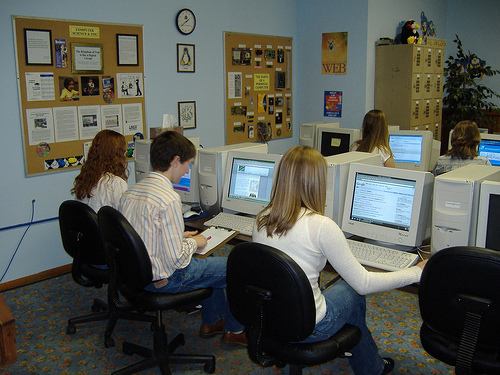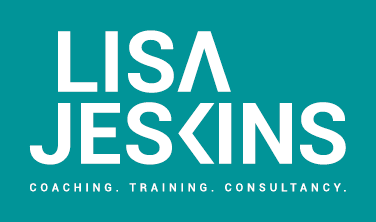Warning: pretty long post.

To be honest, it’s really hard to define what makes a good exercise and I don’t believe there are any hard and fast rules. It may sound like a cop out but there are so many variations on what an exercise could be that it’s almost impossible to say exactly what it is that makes one effective. However there are lots of things that I do when designing an exercise that I can share with you which will hopefully help you
To state the obvious, what you are trying to do with an exercise is get ‘the learning’ across as effectively and as enjoyably as possible. (I might state the obvious more than once in this post so bear with me).
However, how do we do that? Well to start with, be prepared.
It’s a good idea to start developing an arsenal of exercises. Lots of things can be adapted to different topics. Get yourself a notebook (electronic or otherwise) and start jotting things down as you come across them.
Do you know people who are involved in training? Do they blog? Follow them. (Oh, I suppose you’re doing that already aren’t you? 😉 ) You’ll get lots of ideas from others.
Go on training yourself. (Budgets allowing) What have you enjoyed doing and what really brought the point home? What activities were used and how did the trainer introduce them?
Also get some books on exercises, like the Trainers Toolkit. Or have a look at a few websites such as Business Balls. (yes, really)
Once you’ve prepared your ‘thinking about exercises’ as well as you can, think about what it is you’re actually doing?
Your number one question is “What are you teaching and what are you trying to get across?“.
You need this to be in the back of your mind all the time, but you also have to think about ‘What sort of group are you teaching?‘, ‘What sort of room will it be in?‘, ‘How long have you got?‘, ‘Are we talking about an individual pen and paper exercise?‘, ‘A computer exercise?‘ Or an exercise for people to do together to get them talking?‘
So before you even start designing an exercise you need to find out the following:
- What?
- Who?
- How many?
- Level of existing knowledge?
- What do you need – (PCs? Will you need the Internet? Specialist software? Flipchart and paper? Data projector?)
- Where?
- What is the layout of the room
- Can it be changed?
You need these questions answered because:
A lecture theatre or a computer room isn’t particularly conducive to flip chart and group discussion work. Although you can get people to work with the person next to them or elbow partner (I totally stole that phrase from Megan Oakleaf, keynote from last year’s LILAC), it’s difficult to get people to talk when they are sitting in lines.
Group discussion works better in rooms where the tables and chairs are cabaret style. (What’s cabaret style? This PDF explains more about Room layouts and their uses.)
You can’t do a hands on session without PCs/laptops. (Did I mention that I might be stating the obvious?)
Once you have all of the information you need, you can start to prepare the actual exercise and go back to
“What are you teaching and what are you trying to get across?“.
When thinking about an exercise, break it down and think about your goals, just as you would for the whole session. e.g.
- teach people how to create a twitter account
- get delegates to talk to each other about change happening in their organisation or department
- get students to select keywords from their assignment titles (as a precursor to starting a search strategy)
If you’re doing something with a PC, can you give them a demonstration of how to do something and then give them a handout on how to do it themselves? Or ask them to find further more specific pieces of information? Can you get them to discuss what they did afterwards?
Can you give them a quote to discuss? Or a video to watch? Can you get them to discuss it in groups and write up their findings to present back to the group as a whole? You might want to direct their discussions by giving them specific questions to answer.
Can you give them examples of assignment titles, and then give them all of the words from the titles on separate pieces of paper and they have to select which ones are the keywords?
I’ve only mentioned a fraction of the exercises that I produce and there are so many more. Sometimes it’s a good idea to think about your presentation style. What can you do well? Does your style lend itself to a particular type of exercise? Have you thought about learning styles? Have you made sure that your session appeals to lots of different learning styles? Is there something that you could bring to this exercise that will make sure you have?
Again it might sound obvious but a good exercise, has a good introduction. Explain what you want people to do. A couple of different ways and a couple of times. Ask questions to make sure people know what they are doing. (See Tip 2 below)
Remember as well to summarise the exercise at the end. Why did you make them do that and what did they learn? (or what did you hope they learnt) You can even flip it round and get people to tell you what they have learnt. This will reinforce their learning.
Experiment and practice and see what works for you, as well as for the people attending the training. Remember as well that something that doesn’t work with one group might work with another so don’t be put off by one bad experience. If you’re worried about it, get a colleague to come in and watch you do the activity, they can offer an informal peer review and tell you if you’re not hitting the mark. I often do a reality check with a friend or a colleague beforehand too. Will this work or am I insane? Reflect on what you have done and see what can be done to improve it.
So I’ve not given you an ironclad way of designing a good exercise. I’m not sure there is one. However I hope I’ve helped you to prepare to create a good exercise.
Best of luck and enjoy yourselves.
And before I go… a few more things to remember:
Tips to remember.
TIP1: Golden rule of doing an exercise – Try and avoid making people uncomfortable. (Would you cringe if you were asked to do the exercise? Although be reasonable with this and remember that you’re never going to please everyone. Is it appropriate for the group that you are training?)
TIP2: If you have created instructions for something, (particularly if it’s a hands on exercise) get a colleague to do it… There is nothing more damaging to learning than bad instructions. They confuse people and make it seem hard. People don’t like not understanding things, it makes them feel stupid. (Funny hey?) Which then gives them a mental block to get past before they even get to the learning.
TIP3: And this does come after you’ve done it, did you enjoy getting people to do the exercise? If you enjoy it, then the chances are they will too.
PS. As I was writing this post I realised that I could actually give you examples of some of the activities that I do and find work well. I decided not to include them in this post but will write about them after I written the posts I talked about in Thank you and posts to come…

Thanks Lisa for this helpful and realistic post! I particularly like the “Will this work or am I insane” reality check! That’s what colleagues are for.
Thanks Alison, I’m really pleased it’s useful and it IS totally what colleagues are for. Or now friends. 🙂
Pingback: Reading January 2013 « Libraries, the universe and everything
Pingback: How to integrate interactivity into your training sessions | Lisa's Training Blog